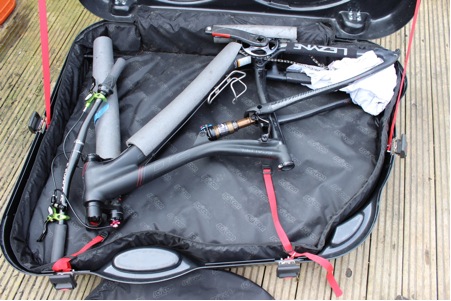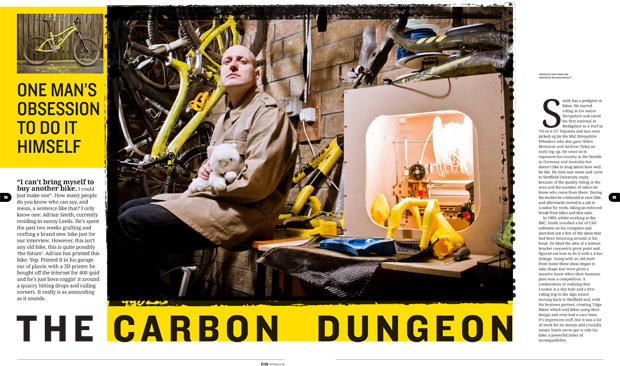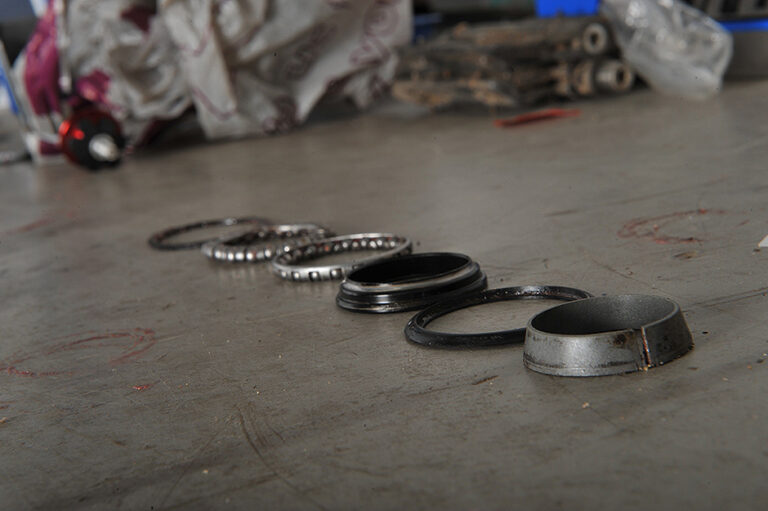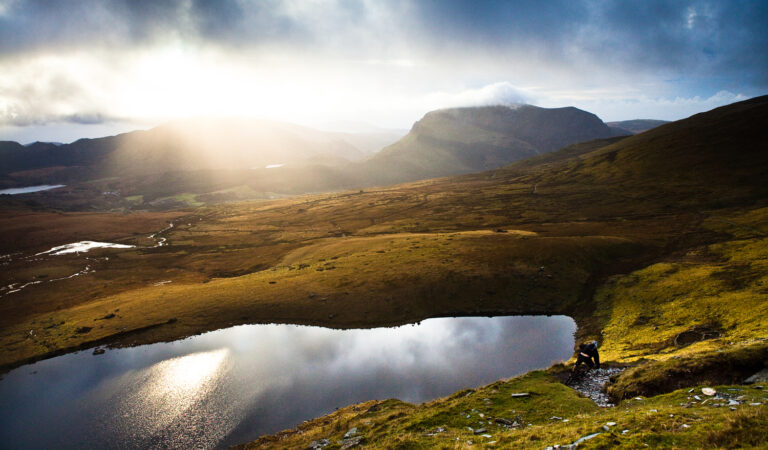
I think you can learn to ride a bad bike, but I believe some riders will be at an advantage whilst many will carry an unnecessary weight around their necks (even if the bike is light). Gwin’s Trek is almost certainly part of his rise to the top, Minnaar’s in his reclaiming a World rainbow this season. A great bike/rider combination can generate lift and maintain support amidst the mess.
Eight inches of travel can hide no end of sins, and it is one of the most difficult to set up. I have come across few top racers who know what they want AND how to achieve it. The clever ones readily admit this and work closely with technicians. Suspension is an integral part of the dynamic and so to is sizing, why do you think road bikes are made to measure? Be fastidious about tyre pressures too.
Learn to feel and use ‘the pocket’ in a bike’s suspension (assuming it has one). Like two opposing magnets, use it as a platform to push off and sit within. It is the go–to point, the part that connects rider–bike–terrain.
The engine room is central to any continuity or your ability to link phases of riding together. No matter what line or bike set up, if your engine room is not up top scratch forget it. More often than not flow is something that starts from the your physical ability alone. A massive subject.
Breathing. Deep into a rock field or root forest it’s surprising how many riders forget to even keep the basics of life ticking over.
Practice. In as much as some things will rely on you pushing Gollum aside, removing doubt and fear, and…yes, many of us will never truly rid ourselves of those demons. Time on a bike counts for so, so much. It teaches you timing, balance, the search for grip, poise. Try something fresh.
Connect. Learn to connect, ride a pump track.
Competition. I’m not sure. I can say for certain that in a state of hangover or on a group ride unless I’m out in front then it’s most likely that I will never achieve flow. I think it requires a state of pressure or stress to engage into flow, but having said that, some of my best times (both literally and metaphorically) have been when the clock has not been ticking. Does it win you races? Who cares really?
Flow in mud, in typical British conditions? Yes, but many will opt for finding some grip first! The breakdown, keeping in and out of the contact patch. I recently read an article from a skilled cycle journalist saying that flats will no longer count at World Cups. This is clueless. As long as there’s mud and root there will always be flats. When Danny Hart won Champery he said he’d introduced a different style, but Champery was different in 2011, it was no 2007 track in which hardly anyone could stand up straight. True mud and root tests rarely exist these days. Champery 2011 was no such occasion.
The unknowns. Hill Val di Sole 2007.
My mate Jonny. He told me this carrying speed business is all well and good except “does it have any relevance?” I asked Jonny what he thought about flow. “Is flow really something most of us want? Well, grip is what most of us look for around here from September onwards, but yes our ability to find flow depends on the terrain.”
It’s well recognised that flow exists for mountainbikers of all levels, it’s what we look for. But Jonny adds, “being on a pinned race run with everything going your way is not flow is to most of us, it’s not about competition.”
CHAPTER THREE
LIMITSLimits to flow. Using the ground. Extracting force and energy from the ground is a simple yet very difficult technique to practice and teach. Scarily, there are limits to the spatial awareness at large even within the top ten World Cup racers, and having witnessed first hand many of these riders’ ability to a) identify such places, and b) apply relevant technique to generate drive. In that respect I believe only few have mastered the art of concert pianist.
It’s all about connecting with the terrain and timing and that’s why very often a rider with local knowledge will throw in a good ride because he’s identified the hot spots. Except…I once lost 20 metres of track to Sam Hill over a 75 metre rock section I knew intimately, even though I was off the brakes and on his wheel entering the carnage. Could it be riding close to the fifth dimension? Maybe, it certainly involves every one of the things I’ve mentioned, plus instinct.
The ground to a mountainbike is like wind to a sailing boat in that can be used to generate lift and power. It requires reading and in this respect (as said before) the terrain is like a song sheet, but what does it feel like to get every note right? Well, even then you might well be technically perfect, but true musicianship is about technical ability and that ‘other’ thing.
Are there limits to flow on a certain track? Limits to speed? Maybe dirt jumping has an answer. Good BMX riders are masters of generating speed from the ground, for dirt jumpers it’s pretty much essential. Dirt jumps are an interesting example of flow theory, for the shape and speed is largely fixed. There is a speed and a shape to get the maximum out of that terrain. The only change is rider shape and bike. Too fast you over jump, too slow you case. Connection.
Video edits have a lot to answer for. Mixing brilliant flowing music with less than fluid riding creates a disconnect, raises expectation. I cannot imagine Ayrton had Lemmy from Motorhead in his ears entering Tabac at Monaco. Use them as motivation, but remember it’s only ever about riding two wheels in dirt, you cannot sync a track to a soundtrack, forget the music, learn to read the terrain in front of you.
REF: Csikszentmihalyi, M.: Abuhamdeh,S. &Nakumura, J. (2005) “Flow” in Ellliot, A, Handbook of Competence and Motivation, New York: The Guildford Press, pp 598-698





